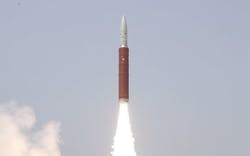India’s leap in space: the significance of the first Indian anti-satellite test
The Military & Aerospace Electronics take:
1 April 2019 -- Modi declared that India had conducted an anti-satellite (ASAT) missile test, lauded the scientific establishment, emphasized that this was a measure for national security without contravening any international law, and assured that the step wasn’t aimed toward any specific state.
The exercise, dubbed as “Mission Shakti,” involved the use of a direct ascent hit-to-kill, where a missile from Earth, without any explosive warhead, destroys the targeted satellite upon impact through kinetic energy alone.
The Indian space program marks a half-century of operation this year, as the Indian Space Research Organization (ISRO), the sixth largest in the world, was established in 1969.
John Keller, chief editor
Military & Aerospace Electronics
Ready to make a purchase? Search the Military & Aerospace Electronics Buyer's Guide for companies, new products, press releases, and videos
